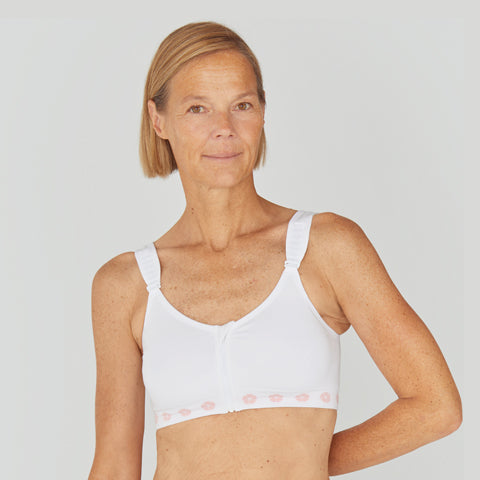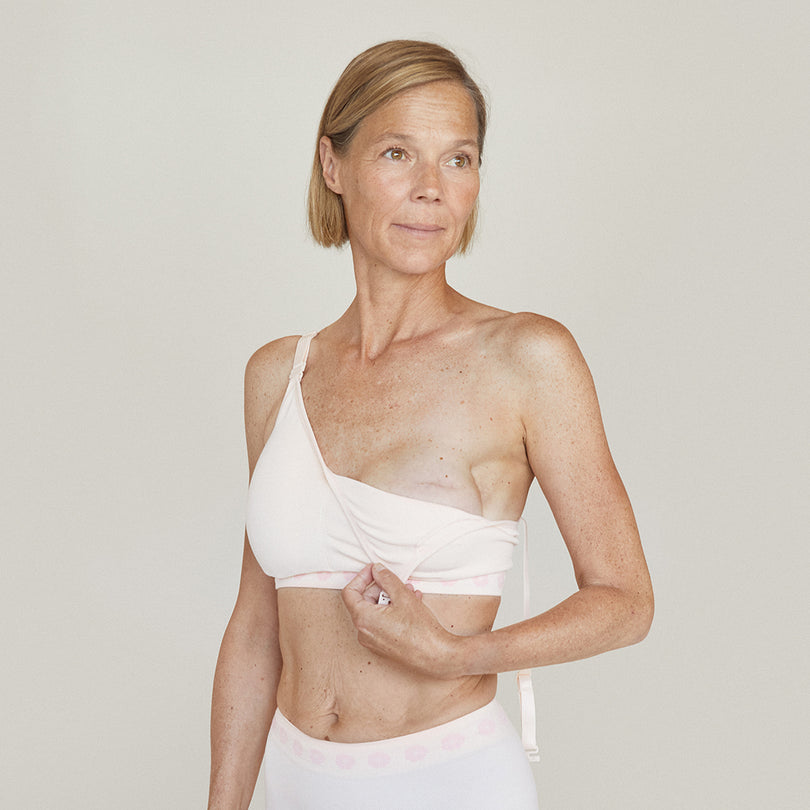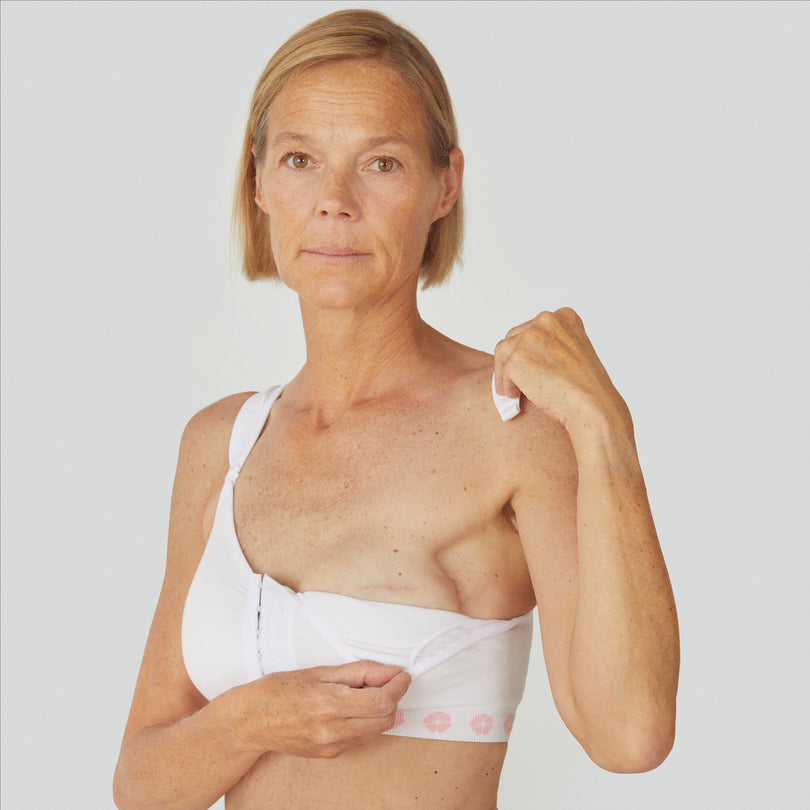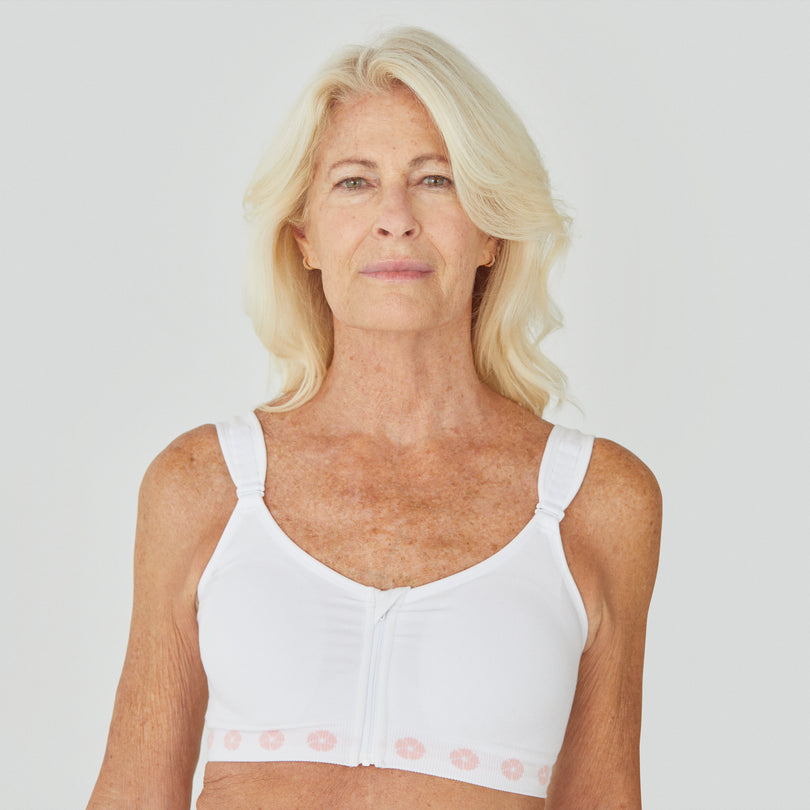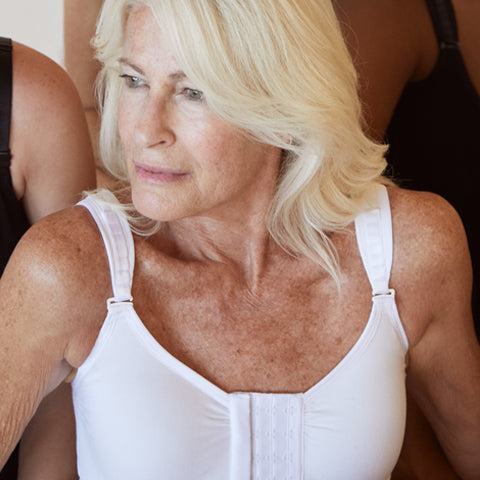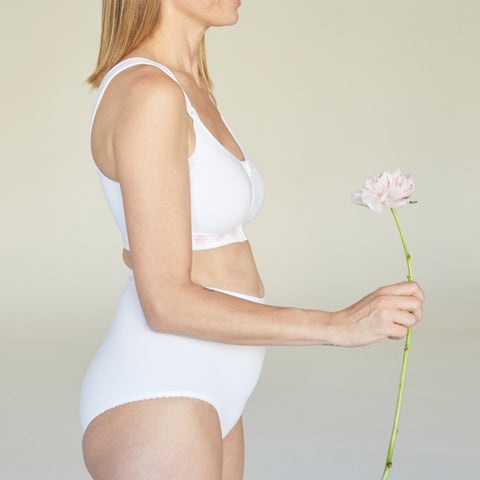If you’re going through treatment for cancer, you might not feel much like exercising. For many women, breast cancer treatment can have adverse side effects like fatigue, loss of appetite, nausea, depression, joint pain and weight gain, any of which can make you less inclined to exercise.
But studies have shown that exercise after a breast cancer diagnosis can reduce the risk of breast cancer progression, of new primary cancers and of breast cancer recurrence.1 Exercise can also improve wellbeing and help prevent other serious conditions, such as cardiovascular disease, that pose a greater risk for breast cancer survivors than for women without breast cancer.2
Exercise to Restore Mobility Following Breast Cancer Surgery
Breast surgery, lymph node removal and radiotherapy can all affect mobility in your arm and shoulder, so it’s essential to exercise afterwards to restore mobility and strength. Cancer Research UK have created this excellent video that shows exercises for the weeks following your surgery. Please note: they are not suitable for those who have undergone breast reconstruction and always seek advice from your Breast Care Team before starting any exercises to ensure that they are suitable for you.
Exercise Following Your Initial Recovery
Exercise and Lymphedema
Lymphedema is a swelling of the arm, hand, chest wall, back or other body part caused by a build-up of lymph fluid in tissue after surgery. Women who have had their underarm lymph nodes removed or lymph node radiation therapy are particularly at risk. For a long time, patients were advised that exercise could increase their risk of developing lymphedema or make it worse.
Four recent studies3, however, have shown no increases in swelling or worsened symptoms and even suggest that a supervised program of slowly progressive exercise training could reduce the risk of lymphedema. If you’ve had lymph node surgery or radiation therapy, talk to you doctor to get advice on steps to take to lower the risk of lymphedema and an exercise program that is suitable for you.

Fitness Training
Fitness training is exercise that makes your heart, lungs, blood vessels and muscles work more efficiently, increasing your stamina and endurance. It reduces the risk of your breast cancer returning as well as reducing your risk of heart disease, diabetes and osteoporosis. It improves mood, helps you sleep better and reduces stress.
The American Cancer Society recommends that cancer survivors get 150 minutes of moderate or 75 minutes of vigorous intensity physical activity each week.
150 minutes of moderate activity may sound like a lot, but moderate just means that you get your heart rate up so that you can still hold a conversation, but you can’t sing! For many, a brisk walk may be enough and you can break it down into manageable chunks. So it could be half an hour five days a week. Or three sessions of ten minutes, five days a week. So, if you’re not used to exercising or are not feeling great due to your treatment, start slowly and build up gradually.
Vigorous exercise increases your heart rate so that you can’t say more than a few words without pausing for breath. This level of intensity is best suited to those who are already used to physical exercise. For those recovering from breast cancer treatment, some forms of exercise may not be recommended by your medical team. For example, in the early days of your recovery, your health care team may recommend cardio exercise which isolates your legs/lower body. Your Breast Care Team will be able to advise you on what fitness training is best suited to you.
Strength Training
Strength exercises strengthen your muscles and bones by adding weight or resistance to a movement, they also help to improve balance and quality of life. Typically strength training should not be started until 4-6 weeks after surgery when drains have been removed and you have no open wounds. Building strength starts by using small hand weights, and is increased slowly over time.
The American Cancer Society recommends at least 2 strength training sessions each week. As with all exercise it’s important to start slowly and build up gradually. For strength training, it is best to start in a supervised setting with a physiotherapist or your health care team who will advise you on the exercises best suited to you.
Wearing the right bra for exercise after breast cancer treatment.
Wearing the right sports bra after breast cancer treatment and post mastectomy is incredibly important for any exercise you may decide to under take. Your body will have limited mobility compared to pre treatment, so you will need a bra that can provide you enough support while being active, preferably easy to put on and take off.
Our Peony Zip range can be worn as a mastectomy and post surgery sports bra, it provides low-impact sports support and will keep you cool, dry, and comfortable throughout your session. It has easy access as it opens at the front and has adjustable straps, providing you maximum comfort.
Shop our Peony Zip Bra here!

In Short
Exercise can bring incredible benefits post breast cancer treatment. In the aftermath of surgery it can help you get your strength and mobility back so you can get back to doing all the things you did before your treatment. And in the longer term, a combination of fitness and strength training will not only help you feel better, but can also help reduce the risk of the cancer coming back and lower your risk of heart attack, stroke and diabetes. So talk to your healthcare professionals and decide what exercise routine is right for you. Remember a little activity is better than none, so start slow, build up gradually and enjoy it!
1 https://www.ncbi.nlm.nih.gov/pubmed/25752971
2 https://www.ncbi.nlm.nih.gov/pmc/articles/PMC4666721/
3 https://www.ncbi.nlm.nih.gov/pmc/articles/PMC2800982/
post updated 27-2-2020


